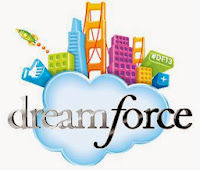 Dreamforce, Salesforce’s user conference, is always a phenomenon – boatloads of sales and marketing tips and tricks alongside the philanthropic videos and big name entertainment. However, it was these three ideas that impressed me most.
Dreamforce, Salesforce’s user conference, is always a phenomenon – boatloads of sales and marketing tips and tricks alongside the philanthropic videos and big name entertainment. However, it was these three ideas that impressed me most.
Marketing automation enters the age of the platform: The integration theme threaded through Dreamforce as the company unveiled Salesforce 1, a platform for the Internet of Customers. Providing a quality digital customer experience requires the integration of applications, data, messaging channels, and delivery mechanisms (including mobile and machines). Like an orchestra playing a piece of music, a brand is more richly experienced by multiple instruments simultaneously. Orchestration is the key. If the oboe plays independently in this corner and the violin over there, you can imagine the discord – even if they all work from the same sheet music. Integration, platforms, and clouds are themes I’ve also heard from Oracle Eloqua, Marketo, Adobe, IBM, Hubspot, and Microsoft. Most of these companies will fill in important platform gaps over the next few years to become winners (I think Salesforce will clearly be in this camp).
Why this matters: Marketing technology platforms will prod two big changes. Marketing will need to reorganize and become multi-channel and customer experience oriented. And although vendors playing nice together will be easier to do in the cloud than it was for on-premise software, CMOs will someday find it valuable to standardize on a platform (or “cloud”). Hopefully, they will have differentiated choices that optimize for different business models.
Growing importance of design: I was super impressed with the fireside chat between Marissa Mayer, CEO of Yahoo and Marc Benioff, Salesforce’s CEO. I found Marissa’s ideas on design most intriguing. It’s a topic you don’t hear much about in business circles, yet it was clear that her views on design informed her strategy for Yahoo and her leadership style. One of Marissa’s points – don’t design for the expert. Create a “big green button” for the thing people most want to do. Expert users can afford to work a little harder to get their bells and whistles. Simple things, if they are the right things, make a huge difference. Think about the impact of Amazon’s iconic Add-to Cart one-click shopping.
Why this matters: Change-agents (managers, marketing ops pro’s, communicators, etc.) would benefit from getting grounding in design. You might start with a little podcast I recently found called 99% Invisible.
Marketing in the moment: Marketing is speeding up. Few marketers remain unconvinced about the value of personalization. Messages are more effective when they leverage the viewer’s attributes. Now it seems that time is also becoming an impact point. Your message is more relevant if it pops up within the context of a real-time conversation. Some moments are daily habits – such as exercising, or conducting a task at work. Other moments are occasional, shared, and public – such as a sports event or an event like Dreamforce. Some moments can be planned for but others will pop up opportunistically and you need to be ready.
Why this matters: Marketers pay lip service to the concept of “agile” but marketing in the moment requires a truly different approach than planning a launch. Agility is what enabled the Oreo marketing team to steal the moment at the Superbowl. Read this Wired story to learn how they did it.
These are three ideas that I’m going to pay more attention to.


